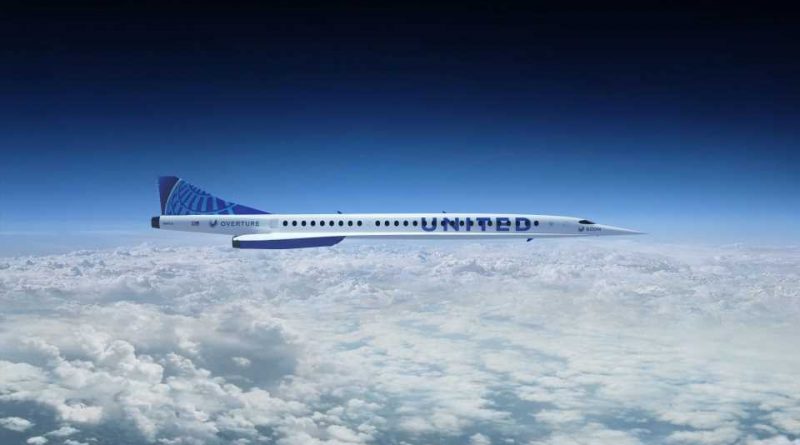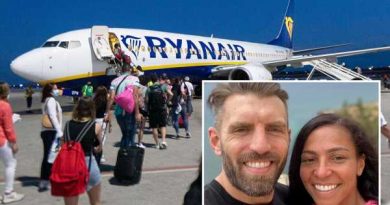Is United’s green supersonic jet too good to be true?
On Thursday, United Airlines announced it was purchasing a fleet of 15 planes that can travel faster than the speed of sound. With a cost per jet of $200 million, the deal is worth $3 billion. If the order goes through, this would be the first fleet of supersonic passenger aircraft since the Concorde.
United says that the planes, which are being purchased from the Denver-based supersonic flight startup Boom, are designed to go at speeds twice as fast as a typical flight. That would be fast enough to get someone from Newark to London in just three and a half hours. The first of these flights is scheduled for 2026, and the company plans to start carrying passengers by 2029. If all works out, United has the option to buy at least 35 more planes from the startup, which is one of several focused on making supersonic flight work for the 21st century.
Load Error
But there’s another twist. United and Boom also want to make these flights environmentally friendly, promising that these flights will be “net-zero carbon from day one,” and rely completely on sustainable aviation fuel, which is repurposed from waste or organic sources.
United and Boom’s announcement comes as the high environmental costs of flying face growing scrutiny. The movement to more stringently regulate airplane emissions is now worldwide, and airlines have increasingly advertised plans to reduce their impact on the environment. Activists like Greta Thunberg have been pushing the idea that people should give up flying entirely.
At the same time, the idea of supersonic flight is appealing because it’s extremely fast and would shave hours off of transoceanic flights. That’s not to mention that it would be pretty cool to travel faster than the speed of sound.
But as the Concorde, the world’s first and last supersonic commercial passenger jet, showed years ago, the prospect of an environmentally friendly supersonic flight is not just a highly ambitious (and potentially impossible) goal. It’s also one that comes with its own set of challenges, from regulatory hurdles to solving noise pollution. Making supersonic flight economically feasible amid concerns over climate change is a difficult feat. Some experts say that the idea of green supersonic flight is almost self-contradictory. The Concorde, they note, was pretty terrible in terms of emissions.
“One of the big problems with the Concorde was it was considered very bad for the environment,” Janet Bednarek, a University of Dayton professor who studies aviation history, told Recode. “It burned a lot of fuel, but it also polluted at the upper levels of the atmosphere.”
The history of supersonic passenger planes actually dates back decades. Operated by British Airways and Air France, the Concorde was capable of flying just over twice the speed of sound: Mach 2.01. The jet famously helped Phil Collins perform concerts in London and Philadelphia (via New York) in the same day. But despite its impressive speed, the Concorde had big problems. Supersonic flight requires an enormous amount of jet fuel, and the engines are notoriously loud inside the cabin. The flights also historically extremely expensive: A roundtrip ticket on the Concorde for the three-and-a-half-hour flight between New York and London could cost about $10,000. After a crash in 2000 that killed more than 100 people and increasingly insurmountable economic problems, the final commercial flight of the Concorde was in 2003.
In recent years, a slew of startups has been working to make supersonic flight happen again. At the forefront is Boom, which has at least $250 million in funding and revealed a prototype jet last October. Atlanta-based Hermeus and Virgin Galactic are developing their own designs for a supersonic jet. Just last month, however, one of the leading companies trying to build supersonic planes, Aerion Supersonic, announced that it would shut down, citing a “hugely challenging” economy that would delay production of its first jet.
There’s also growing work on solving the sonic boom, the startling sound supersonic aircraft produce when they break the sound barrier. NASA is working with Lockheed Martin on a supersonic research aircraft, and the agency told Vox back in 2016 a “quiet supersonic airplane” could be possible, potentially resolving a major hurdle for these high-speed flights. In January, the Federal Aviation Administration (FAA) announced final rules for testing supersonic aircraft, creating a framework for these startups to move forward with flight testing.
To reduce environmental impact, United says Boom planes will use sustainable aviation fuels, but the limited supply of that might be better used on other planes. Research suggests that supersonic planes would require multiple times more fuel per passenger than a typical plane trip, according to Dan Rutherford, director of the International Council on Clean Transportation’s aviation program.
“These would be alternatives to fossil jet fuel, and that fuel is extremely rare today — and it’s also extremely expensive,” Rutherford said. “It’s a super small market already, and trying to combine that with an aircraft that we know will burn a lot of fuel seems really dicey to me.”
A Boom spokesperson told Recode it was working with United to avoid adversely impacting the supply of sustainable jet fuel available to other aircraft.
There are other challenges ahead that make United’s goals questionable. For one thing, it’s not clear how much more passengers would be willing to pay just to save a few hours. While United has not said how much tickets on its supersonic jets would eventually cost, they would likely be more expensive than a typical flight. There’s also the sonic boom challenge and the prospect of noise pollution around airports.
Others are more optimistic, saying improvements in technology that didn’t exist during the age of the Concorde could make supersonic flight a success, despite faltering in earlier decades.
“Supersonics could connect major cities as never before, vastly extend global business networks, boost American competitiveness, and enliven an industry that has been stagnating for decades,” Bloomberg’s editorial board wrote in March. “Down the road, ultrafast travel for the masses isn’t implausible.”
The impact on the environment, the editorial board added, needs to be studied, and supersonic flights should meet international rules about carbon offsets — which are controversial, as Vox’s Umair Irfan has explained.
According to Bednarek, the airline historian, the future of flight needs to be focused on being energy efficient and less damaging to the environment, not on speed or size.
“If they do it — God bless them — they’ve really accomplished something,” Bednarek said. “It’s going to prove to be a lot more challenging than some of the celebratory advertising that’s coming out right now would seem to suggest.”
Source: Read Full Article




